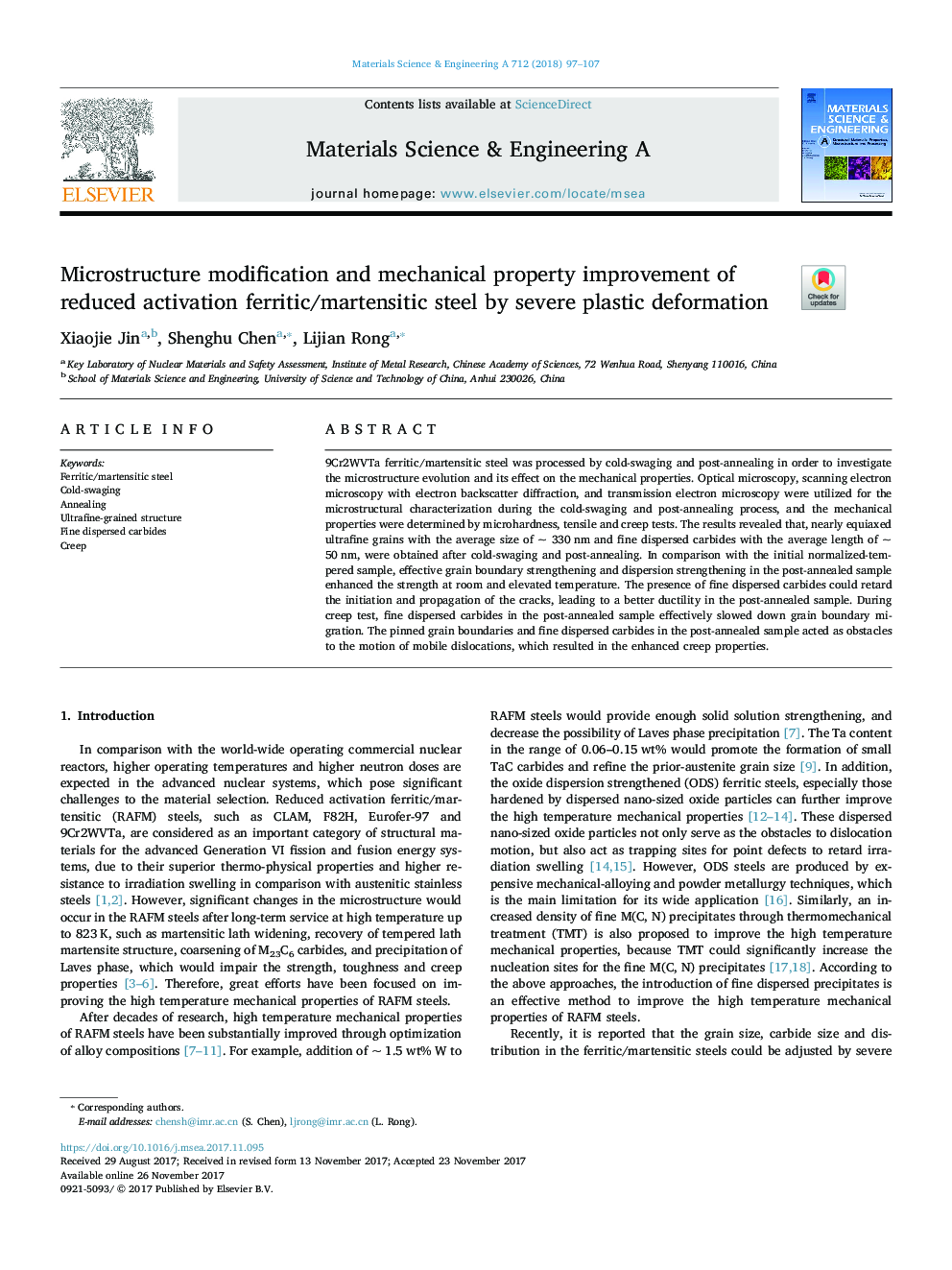| Article ID | Journal | Published Year | Pages | File Type |
|---|---|---|---|---|
| 7973868 | Materials Science and Engineering: A | 2018 | 11 Pages |
Abstract
9Cr2WVTa ferritic/martensitic steel was processed by cold-swaging and post-annealing in order to investigate the microstructure evolution and its effect on the mechanical properties. Optical microscopy, scanning electron microscopy with electron backscatter diffraction, and transmission electron microscopy were utilized for the microstructural characterization during the cold-swaging and post-annealing process, and the mechanical properties were determined by microhardness, tensile and creep tests. The results revealed that, nearly equiaxed ultrafine grains with the average size of ~ 330Â nm and fine dispersed carbides with the average length of ~ 50Â nm, were obtained after cold-swaging and post-annealing. In comparison with the initial normalized-tempered sample, effective grain boundary strengthening and dispersion strengthening in the post-annealed sample enhanced the strength at room and elevated temperature. The presence of fine dispersed carbides could retard the initiation and propagation of the cracks, leading to a better ductility in the post-annealed sample. During creep test, fine dispersed carbides in the post-annealed sample effectively slowed down grain boundary migration. The pinned grain boundaries and fine dispersed carbides in the post-annealed sample acted as obstacles to the motion of mobile dislocations, which resulted in the enhanced creep properties.
Related Topics
Physical Sciences and Engineering
Materials Science
Materials Science (General)
Authors
Xiaojie Jin, Shenghu Chen, Lijian Rong,
